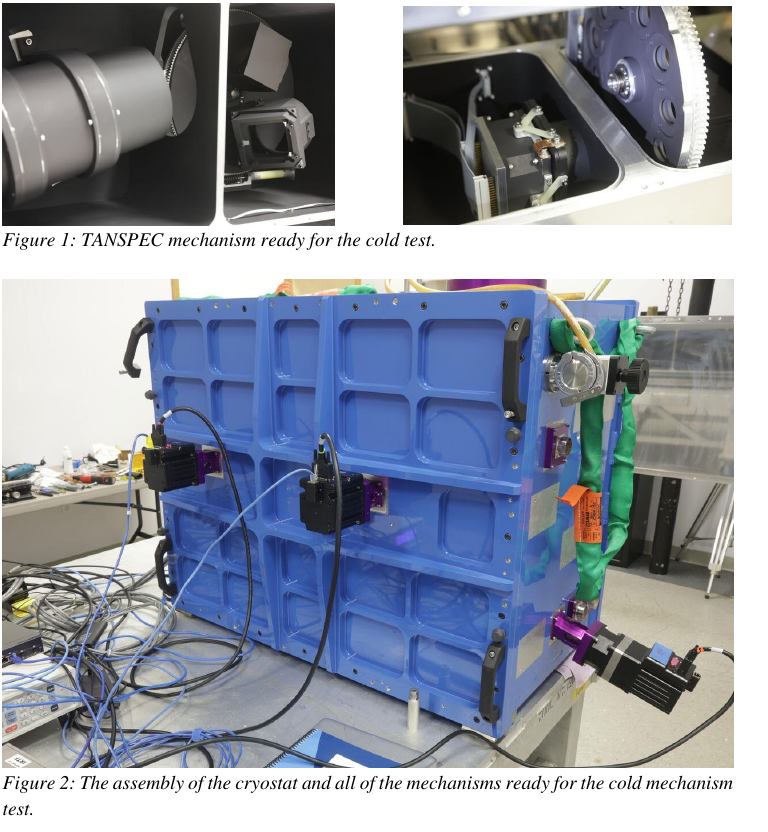TANSPEC
TIFR-ARIES Near Infrared Spectrometer (TANSPEC) is being built in collaboration with MKIR, Hawaii for the 3.6 meter Devasthal Optical Telescope (DOT). It will be a unique spectrograph which provides simultaneous wavelength coverage from 550 nm to 2540 nm, and a resolving power of R ~ 2750. Spectrograph operates in two modes which images the spectrum on to a 2k x 2k H2RG array. In cross-dispersed (XD) mode combination of a grating and two prisms are used to pack all the orders on to the H2RG array at a resolution of R ~ 2750. It also has a low resolution prism mode (R ~ 150) for high throughput observations. TANSPEC consists of an independent imaging camera with a 1k x 1k H1RG detector. The reflected beam from slit (built-in slit viewer) is imaged to this camera through a filter wheel which consists of broad band r’, i’, Y, J, H, Ks and narrow band H2 & BrG filters. This camera has a field of view of 1 x 1 arcmin 2 , and is used for guiding the telescope (IR guider) as well as imaging field for photometry. It also functions as a pupil viewer for instrument alignment on the telescope. For calibration, a uniform flat field from an integrating sphere outside the dewar as an identical f/9 beam from telescope will be imaged. Wavelength calibration will be done by Argon and Neon lamps. Spectroscopy sensitivity (100-σ in 1 hour, 1’’ seeing) is expected to be 15.4 mag (R ~ 2750), whereas in prism mode (R ~ 100) it would be 17.3 mag in the J-band. TANSPEC will be used for a wide range of studies from local star formation to extra-galactic astronomy. Simultaneous coverage of wavelength from 550 nm to 2540 nm makes TANSPEC a unique instrument and ideal for studies which require simultaneous measurement of lines in optical and near-infrared. TANSPEC is expected to be ready for tests on telescope by February, 2018.


